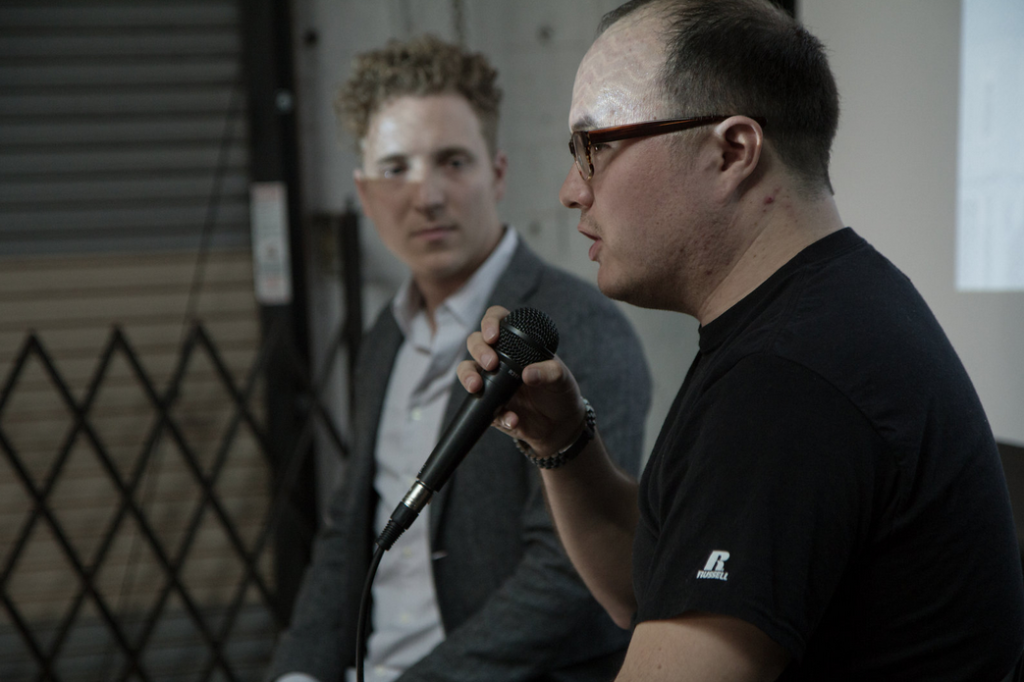Voices
Being the Last Speaker at an Event Sucks—Unless You Tear It Up Like This
When Ben Parr, the author of Captivology: The Science of Capturing People’s Attention got on stage at the West Coast Contently Summit, there was a pop. The bartenders at Tank18, the hipster San Francisco wine tasting room where the event was held, were starting to open wine bottles for attendees. Then a guy waltzed out with a bowl of steaming hot meatballs and set it on the bar. Happy hour was close.
Speaking at a conference in front of strangers isn’t easy, regardless of where you are in the lineup. Going first is tough since your speech sets the tone for the rest of the event. Giving a talk right before lunch and competing for attention with grumbling stomachs is always problematic. But last? Last is the worst. People are thinking about the drive home, the wine, whether they are getting a parking ticket.
Considering Parr has built an entire career on how to get and, most importantly, keep people’s attention, it’s no surprise that, despite going last, he didn’t disappoint. Reflecting on the crowded content marketing space, Parr shared compelling evidence and anecdotes that drove a dynamic conversation about what brands like BuzzFeed are doing, both successfully and incorrectly, to capture people’s attention. Whatever the content—news, songs, marketing, advertising copy, video scripts, speeches—the key is what Parr calls, “the atomic unit, which is, of course, great content.”
Photo by JJ Harris
But those who have been to marketing conferences know engaging an audience is about more than just the panel topic. Parr, also the co-founder and managing partner of DominateFund, an early-stage venture capital fund, turned his talking points into a type of performance.
Here are a few tips to emulate from Parr should you find yourself as the last speaker in a conference program.
Be a little off the wall
Parr admits he’s a bit quirky. He proved that when he somehow brought up The Rock, Kim Kardashian, and puppies who listen to death metal—and made it all sound intelligent. In the process, he also connected to just about everybody in the audience.
Why did he connect with the Kardashian fans, for example? Because, as Parr said, “Belongingness is a fundamental human need, and it’s important to create content that fosters that belongingness and acknowledgement.”
In other words, we pay attention to what validates us. So go forth and validate.
Blow something up
About halfway through the panel, Parr suddenly hopped up, reached behind a banner, and with a loud BAM, unleashed a confetti party popper that spewed streamers all over the audience.
“I nearly wet my pants,” one woman said.
All across the room, shell-shocked attendees were smiling and laughing and paying even more attention than before.
In Captivology, Parr refers to this tactic as a disruption trigger. People pay attention to things that contradict our expectations. Hence, the popper.
Swear every once in a while
At just about every professional conference, you aren’t going to see many little kids running around. A little F-bomb now and then probably isn’t going to offend anyone, and if used sparingly, it can make the audience sit up a little straighter and focus more on what you’re trying to say. Pepper your talk with a few profanities, and if you do it right, people will take notice and tweet about it.
You’ll have to grab a copy of his book (shameless plug!) for a deeper dive into the seven captivation triggers of attention, but it all starts with one thing. “You have to have great content,” Parr said. “Bad content will not get long-term attention.”
Nor will bad speeches.
Image by Sfio CrachoGet better at your job right now.
Read our monthly newsletter to master content marketing. It’s made for marketers, creators, and everyone in between.






